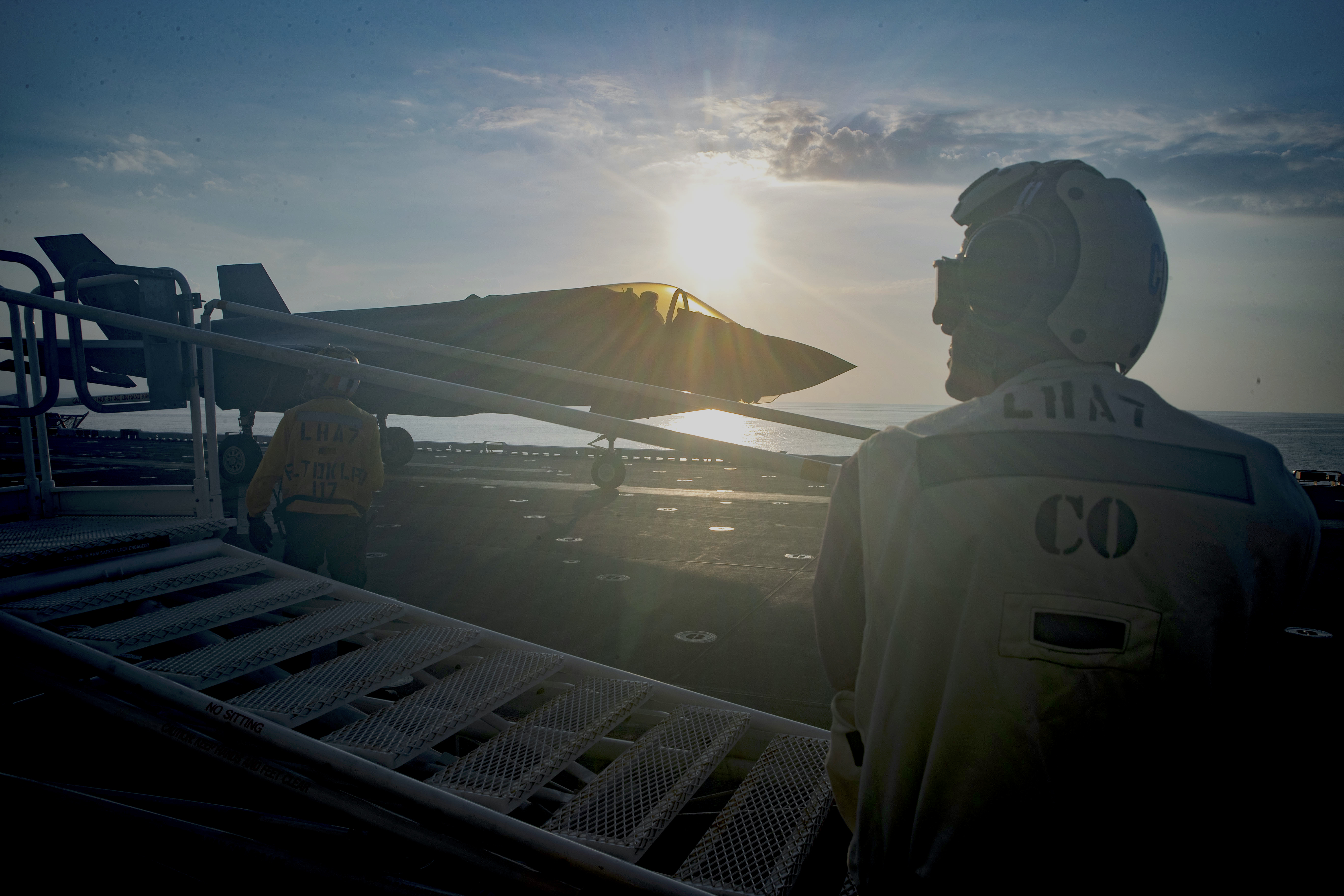
This post has been updated with a statement from Expeditionary Strike Group 3.
Amphibious assault ship USS Tripoli (LHA-7) returned home on Tuesday following a seven-month deployment to the Indo-Pacific, the Navy announced.
The America-class amphib pulled into its homeport of Naval Base San Diego, Calif., Tuesday morning local time.
The ship quietly left for its maiden deployment in May and spent the first few months testing out the “lightning carrier” or “assault carrier” concept with U.S. Marine Corps F-35B Lightning II Joint Strike Fighters aboard.

“The U.S. Marine Corps embarked 16 F-35Bs aboard Tripoli, which flew missions in support of exercises Valiant Shield 22 and Noble Fusion,” according to a Tuesday release from Expeditionary Strike Group 3.
“Overall, the crew completed 2,052 hours of flight operations and traveled 40,303 nautical miles during exercise support.”
That testing evaluated how a big-deck amphibious warship can work with a carrier strike group, USNI News previously reported.
“One day you can have F-35Bs on the flight deck, the next day you could have MV-22s and you can be putting Marines ashore. And so it just is a very versatile instrument and the fact that you have 14 5th-gen fighters on board – it’s an incredibly capable sensor,” U.S. 7th Fleet commander Vice Adm. Karl Thomas said in October of the concept and testing. “And so we’re still in the experimentation phase. We wanted to at least try to find out how would you integrate an assault carrier with a full-sized carrier. What missions might it be able to do?”
During Tripoli‘s time in the Indo-Pacific, it drilled with aircraft carriers USS Abraham Lincoln (CVN-72) and USS Ronald Reagan (CVN-76) for the Valiant Shield exercise in June.
“What we found is we distributed our three large decks for a period of time,” Thomas said of the June exercise.
“There’s mission sets that I think that it’ll be designed for. I think that there are regions where it can operate in a better capacity. And then I think that because of the vertical takeoff nature of the F-35, you can find yourself putting F-35s in [Expeditionary Advanced Base Operations] and maybe bring them back out to the ship for some maintenance and you move them elsewhere,” he continued. “Maybe you latch them up with the carrier and you use the command and control of the electronic countermeasure capability of the [E2-D Advanced Hawkeye and the EA-18G Growlers]. So we’re still in the experiment phase.”
Following the F-35B testing during Valiant Shield, the 31st Marine Expeditionary Unit came aboard Tripoli at the end of July. The amphib was on station operating on the edge of the South China Sea near Taiwan in early August ahead of House Speaker Nancy Pelosi’s (D-Calif.) visit to the island.

At the end of August, Tripoli made a port call in Singapore after operating in the South China Sea.
The ship continued operating in the Western Pacific throughout the fall and also sailed to Australia, making port calls in Sydney and Hobart, Tasmania earlier this month.





